I will try to take you through the process. Last time I reported that Howdy and the boys had finished soda-blasting the bottom down to bare steel, and finished priming. They primed the hull with four coats of black Bar-Rust 235. "A high performance, multi-purpose, surface tolerant, two-component chemically-cured epoxy semi-gloss coating."
Then came a grey 'tie coat', also Bar-Rust, but a different color as a signal.
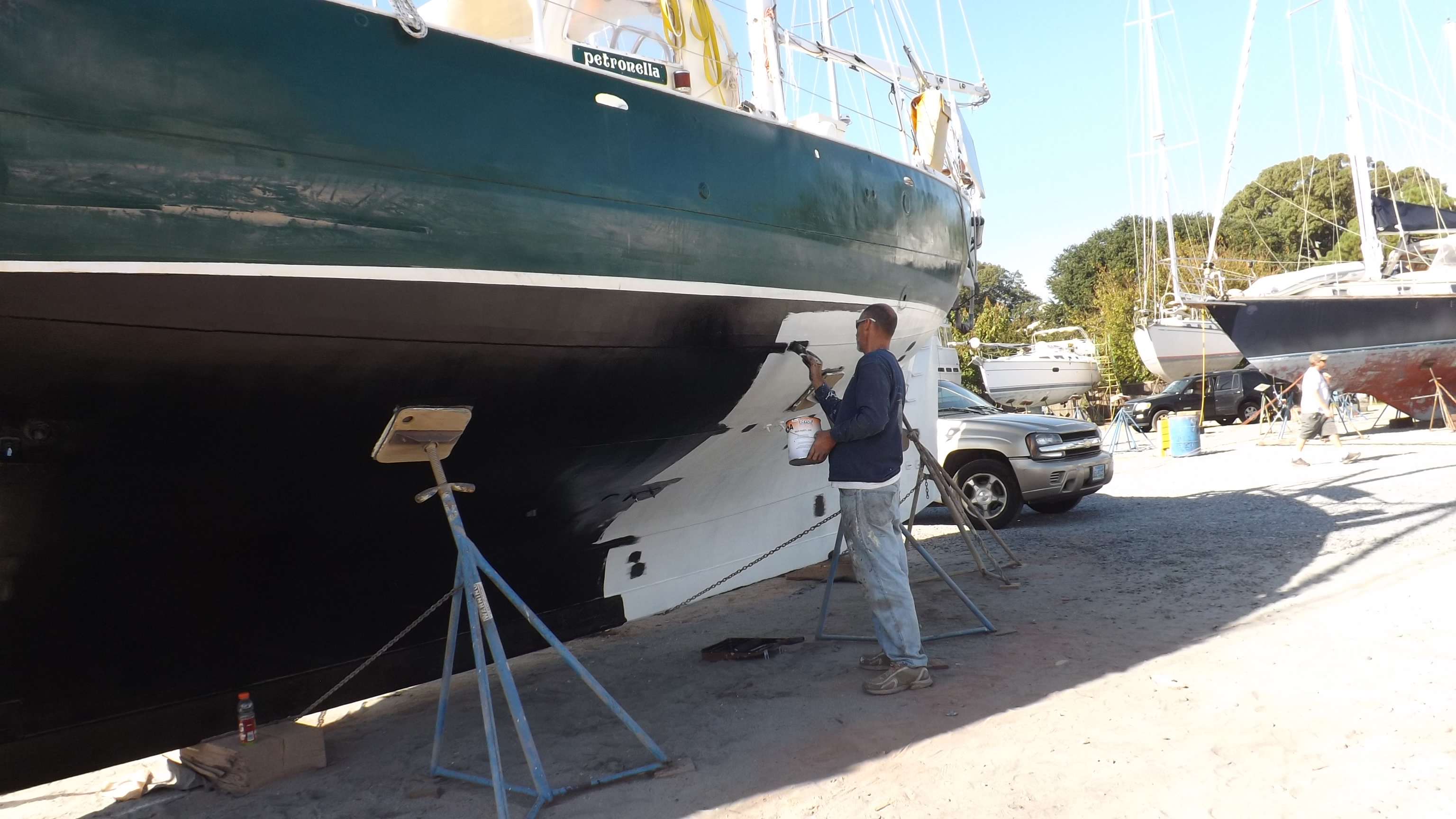 |
| Applying Bar-Rust tie-coat, in preparation for anti-fouling |
Gulp. But if I don't need to paint the bottom for five years, I will be more than satisfied.
What is a 'tie coat'? Don't feel bad, I didn't know either. In this case, the tie coat was a coat of light grey Bar-Rust which was left to dry until just tacky. The first coat of ABC-3 was then immediately applied. Since the tie coat was not completely dry, the two paints mingled chemically, 'tying' the two paints together with both physical and chemical bonds. Pretty clever, right?
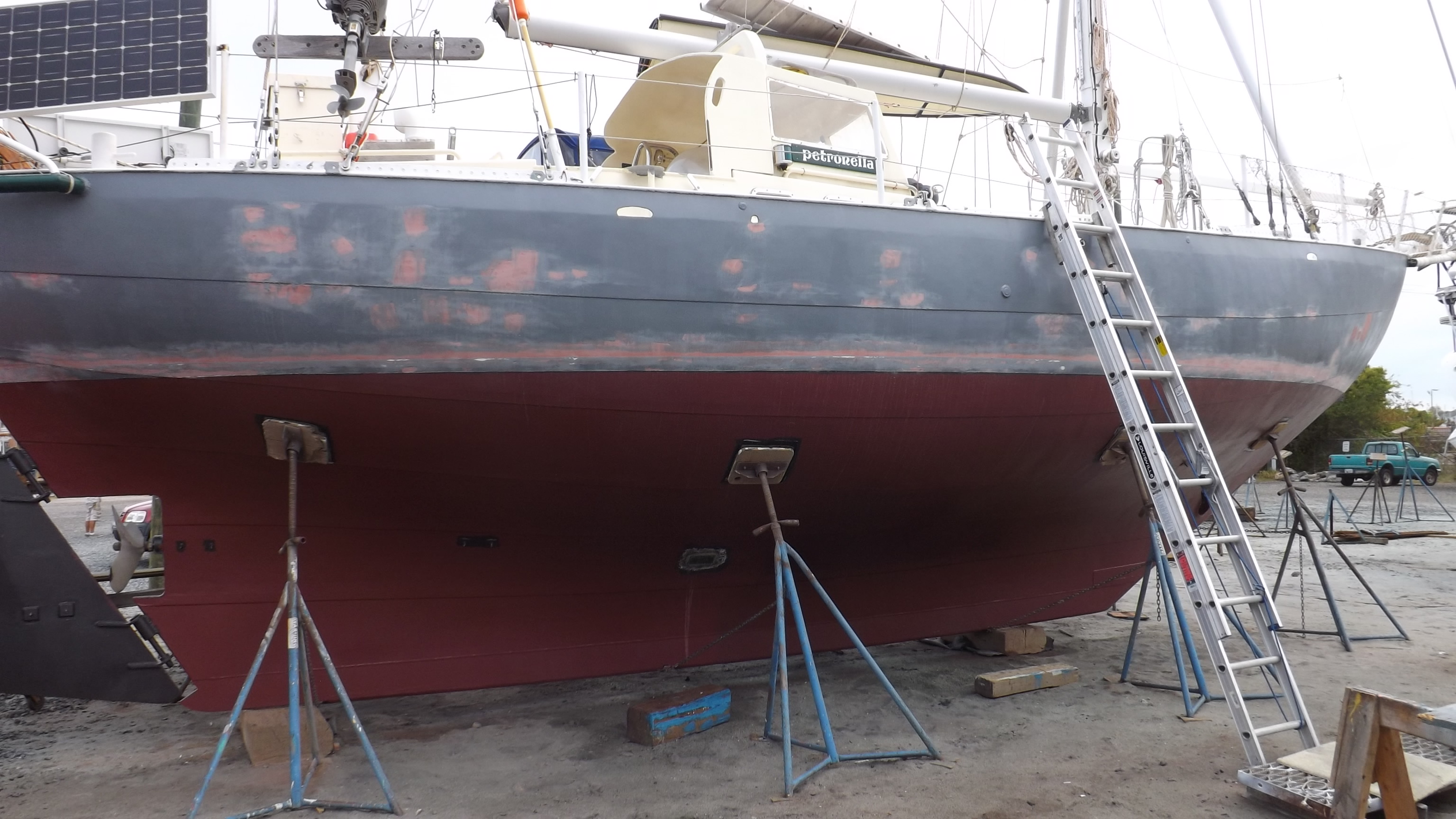 |
| Prepping topsides |
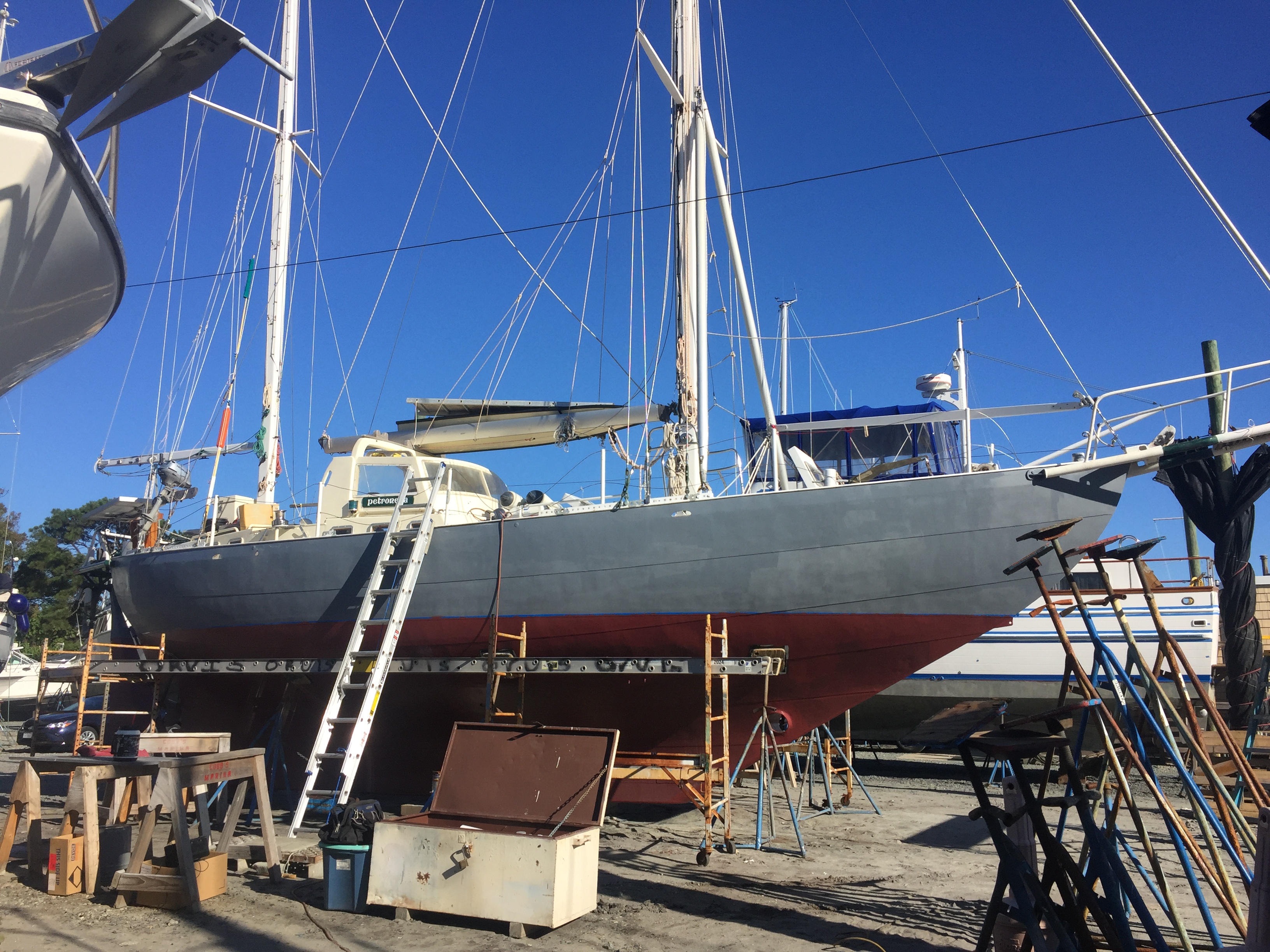 |
| Topsides fully primed |
Sharp-eyed readers will have spotted an odd shape on the bottom, in the second photo, above. After blasting off all the bottom paint, Howdy spotted some pitting in the hull which had been hidden by 40 years of bottom paint.
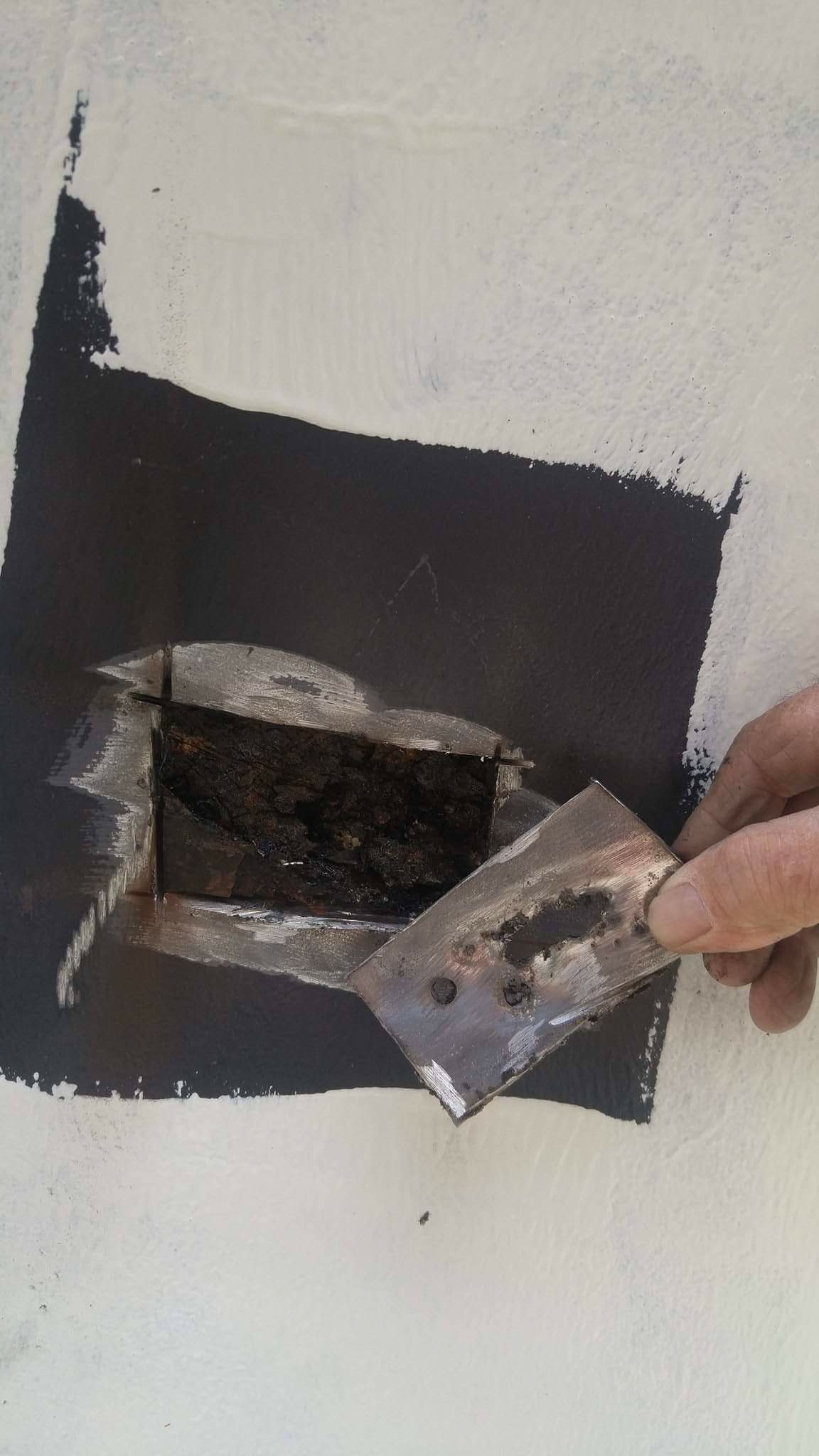 |
| Pitted section of steel |
Anyway, Howdy cut out the rusted piece, and welded in a new piece. The photo above shows the patch playing catch-up with the painting cycle.
Though I would have been happy to pick up a paint brush, Howdy didn't seem to want a complete novice on his team (frowny face), so I had to find my own projects. One of them was a sadly neglected tiller.
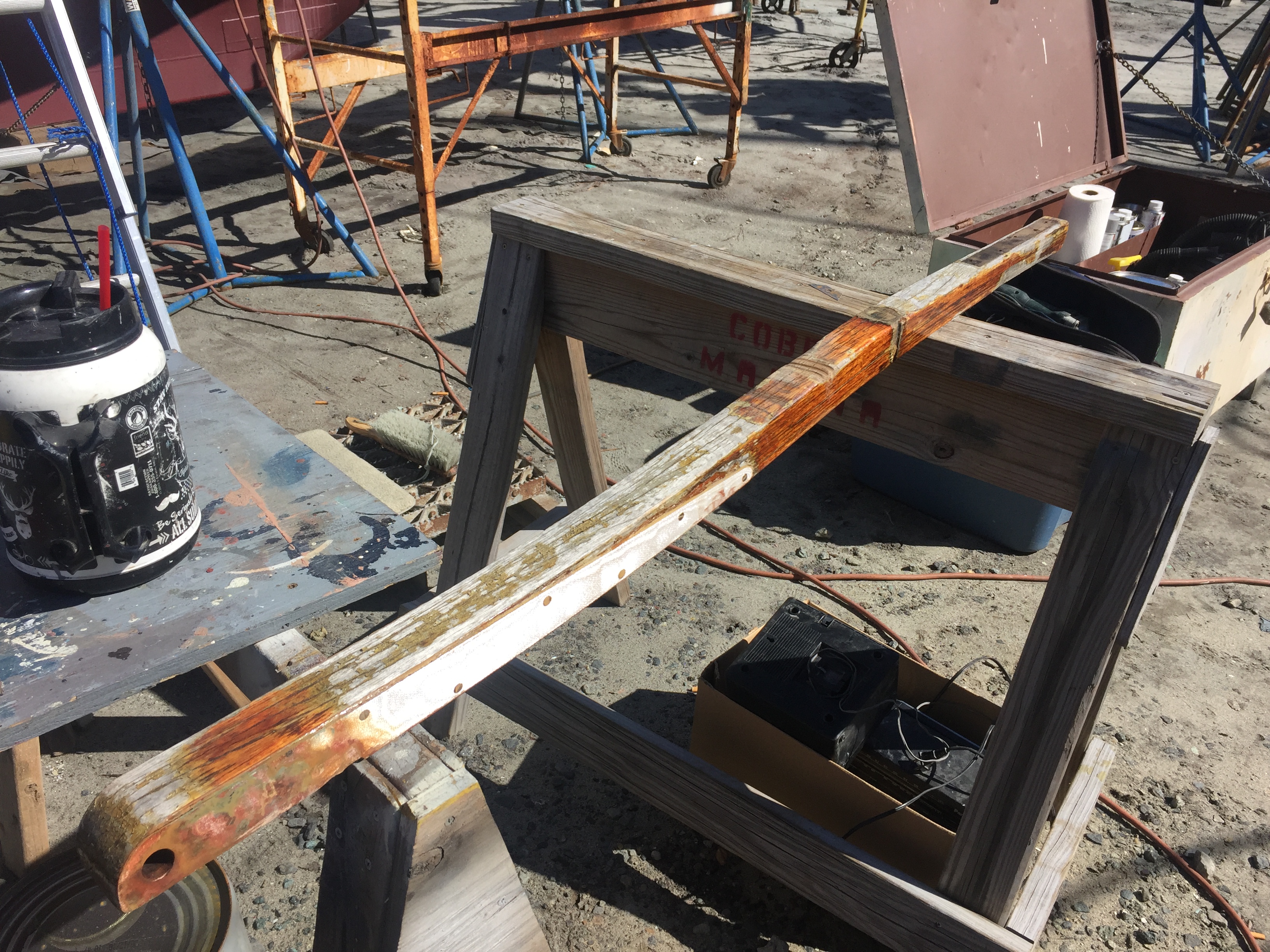 |
| Sad, sad tiller |
After removing the old varnish with a heat gun, and a bit of sandpaper love, a nice teak tiller re-appeared. It's a miracle! Here it is after drinking in the first coat of varnish. Not a very good picture, sorry. I will supply a better one when it's done.
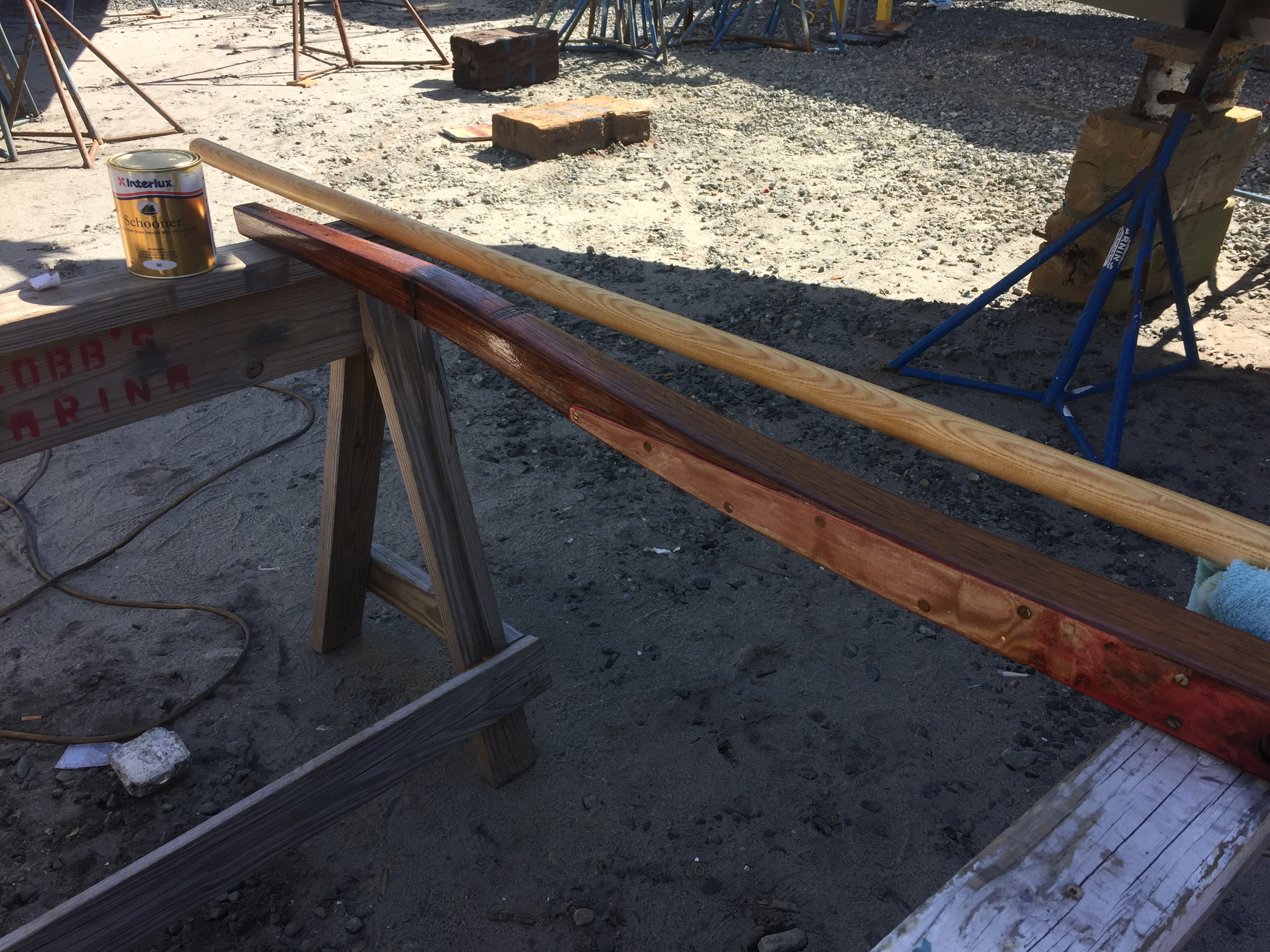 |
| Restored tiller |
The tiller has some sort of fiberglass 'side cheeks'. Not sure what to call them, because I'm not sure what they are for. They are unpainted, but unprotected fiberglass will eventually breakdown under the hot tropical sun, so I'm going to paint these odd side cheeks white after I'm done varnishing.
Finally, today was the day I'd been waiting for -- the day for the first coat of red paint! It was a clear, dry, painting day. Perfect for restoring Petronella to her original color. Here are the boys rolling and tipping the first coat on.
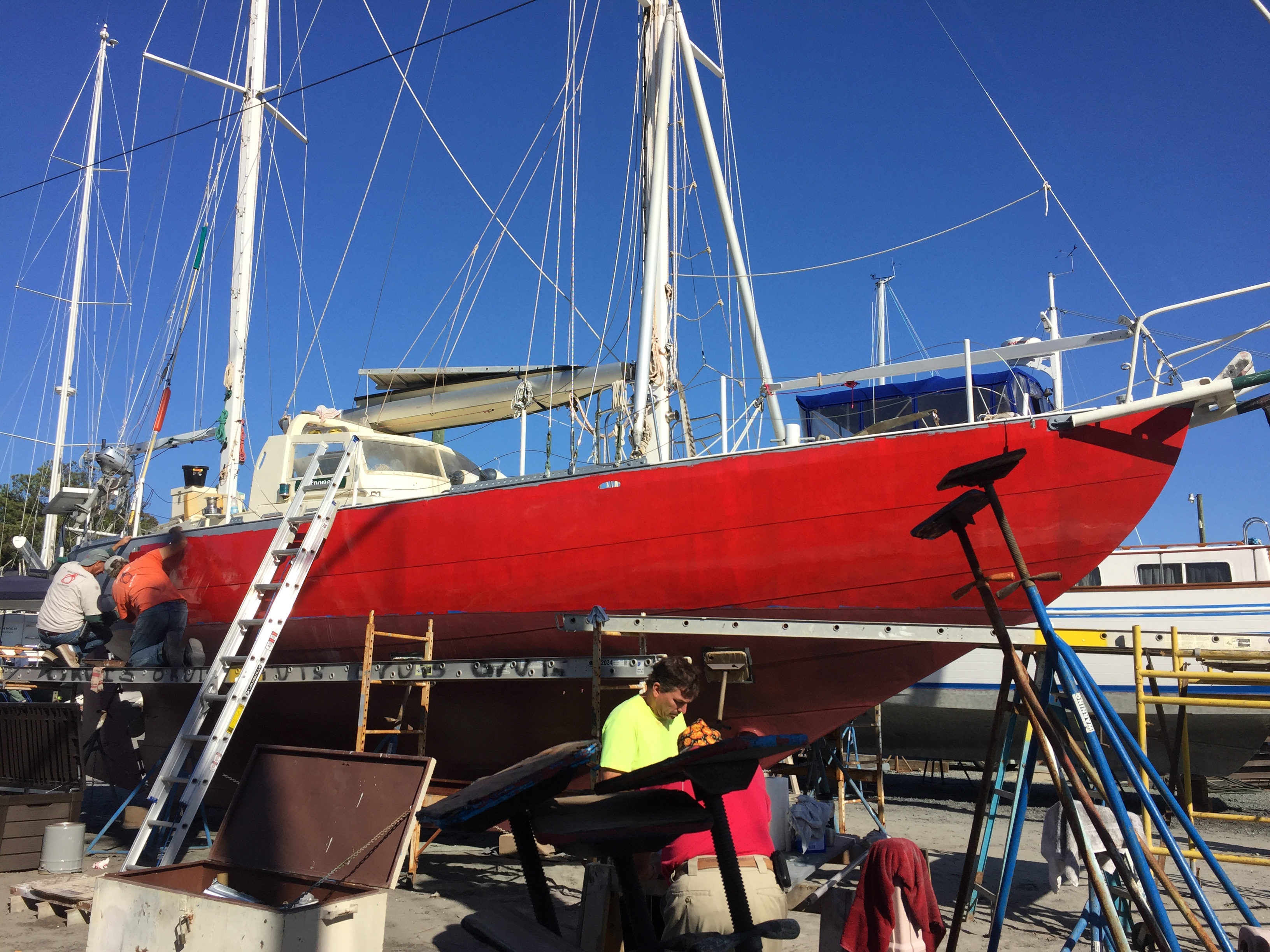 |
| The big day! |
In prepping the boomkin, Howdy's team removed some rope work which revealed a patch of red paint.
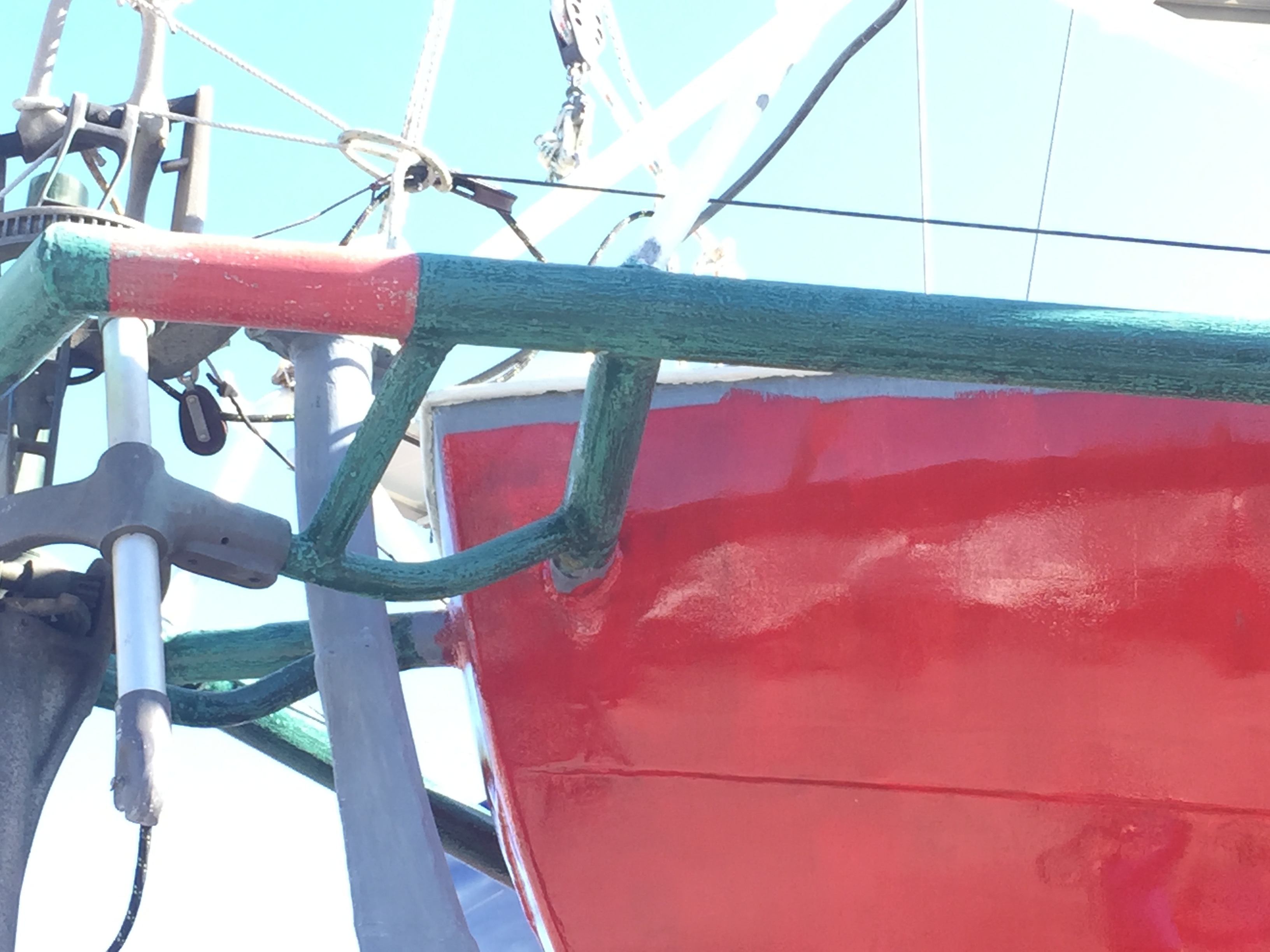 |
| Petronella's original color (on boomkin) |
While the first coat was drying, Larry -- who has worked with Howdy for 20 years -- started on the black trim paint. There will be a lot more of it before he's done, but it's a start.
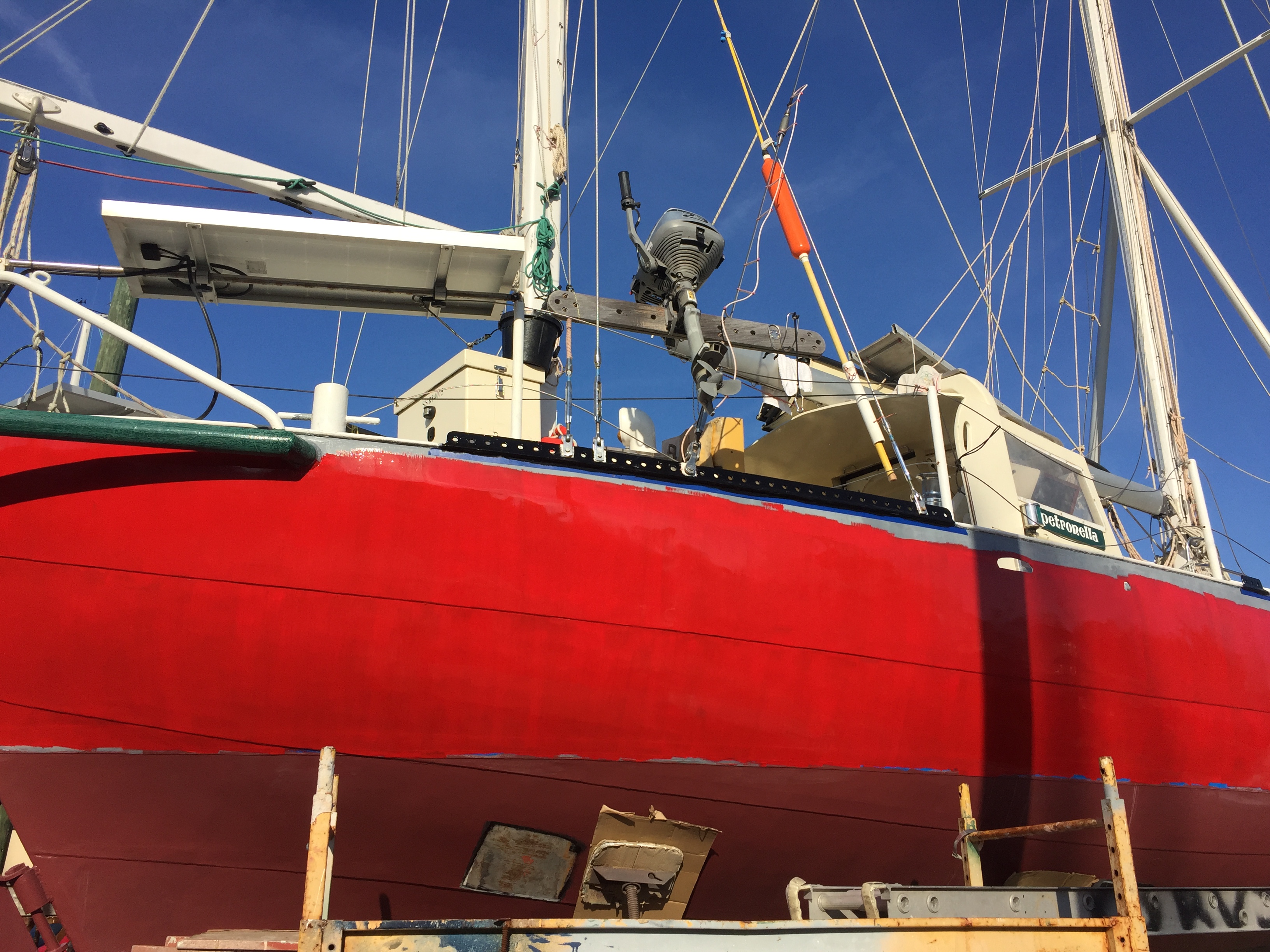 |
| Starting on the black trim paint |
So that catches us up with most of what is going on. There are several side projects that I am working on, but they will have to wait for another post.
The vigorous life!
Next Up: Preventing and Eliminating Rust
The fiber glass on the sides of the tiller will stiffen the tiller a good bit.
ReplyDeleteAh, good thought. You must be right. Lots of stress on that tiller, which I don’t believe is original. The rudder head was designed for a meatier tiller. I will build a better tiller when I have the chance.
DeleteWow, oh wow, John! Congratulations. She is going to look truly magnificent in a few weeks. [from P's previous owner]
ReplyDeleteA few days, actually. They are doing the second coat of red today, and the black boot stripe and trim should follow on quickly. Pretty exciting!
DeleteLooking fabulous! That's a really bright red. Love it.
ReplyDeleteNow, is that outboard suspended in the rigging a new kind of stern thruster? :)
Thanks, Bob. She’s going to be in great shape when she’s splashed. The new paint should help her along towards the next 40 years.
Delete